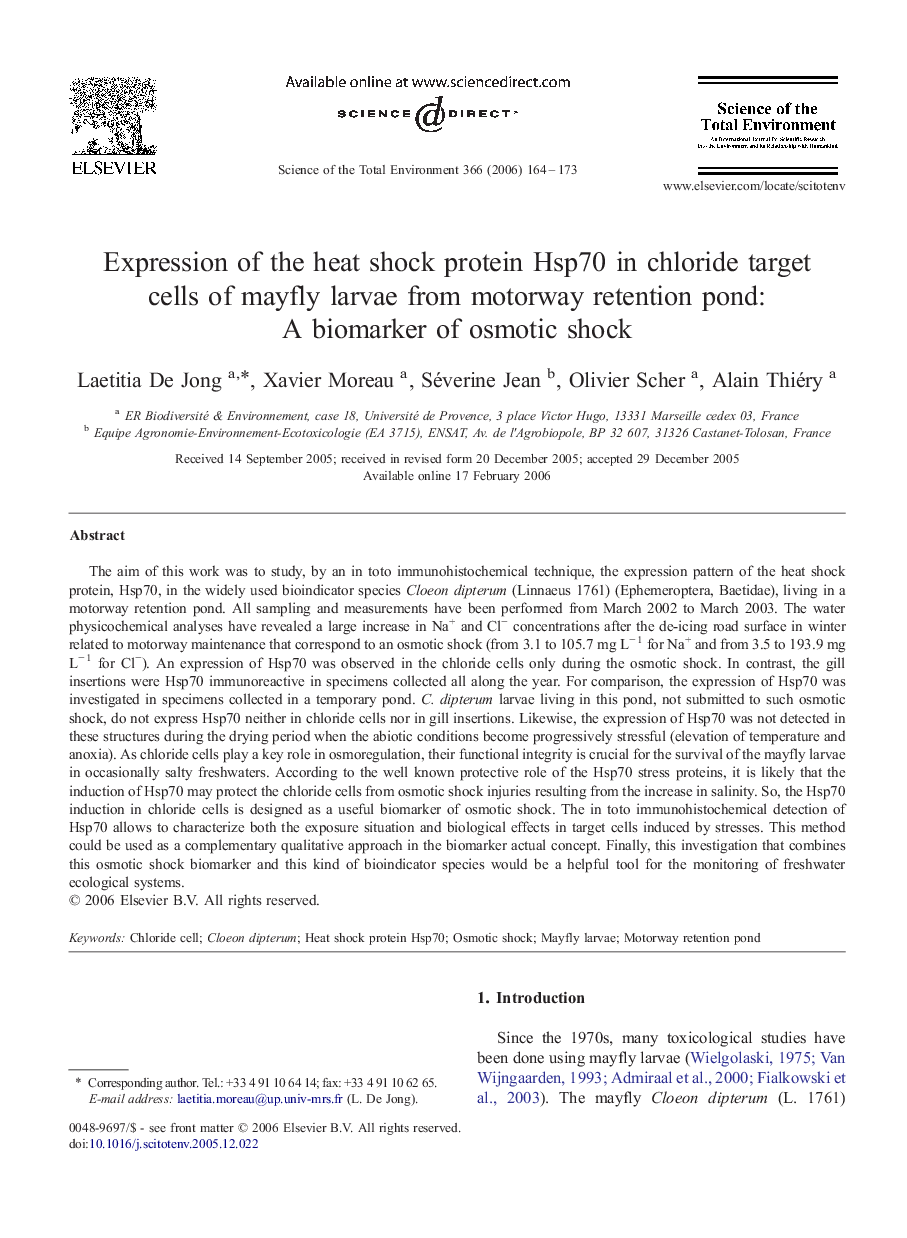| کد مقاله | کد نشریه | سال انتشار | مقاله انگلیسی | نسخه تمام متن |
|---|---|---|---|---|
| 4434232 | 1619972 | 2006 | 10 صفحه PDF | دانلود رایگان |

The aim of this work was to study, by an in toto immunohistochemical technique, the expression pattern of the heat shock protein, Hsp70, in the widely used bioindicator species Cloeon dipterum (Linnaeus 1761) (Ephemeroptera, Baetidae), living in a motorway retention pond. All sampling and measurements have been performed from March 2002 to March 2003. The water physicochemical analyses have revealed a large increase in Na+ and Cl− concentrations after the de-icing road surface in winter related to motorway maintenance that correspond to an osmotic shock (from 3.1 to 105.7 mg L− 1 for Na+ and from 3.5 to 193.9 mg L− 1 for Cl−). An expression of Hsp70 was observed in the chloride cells only during the osmotic shock. In contrast, the gill insertions were Hsp70 immunoreactive in specimens collected all along the year. For comparison, the expression of Hsp70 was investigated in specimens collected in a temporary pond. C. dipterum larvae living in this pond, not submitted to such osmotic shock, do not express Hsp70 neither in chloride cells nor in gill insertions. Likewise, the expression of Hsp70 was not detected in these structures during the drying period when the abiotic conditions become progressively stressful (elevation of temperature and anoxia). As chloride cells play a key role in osmoregulation, their functional integrity is crucial for the survival of the mayfly larvae in occasionally salty freshwaters. According to the well known protective role of the Hsp70 stress proteins, it is likely that the induction of Hsp70 may protect the chloride cells from osmotic shock injuries resulting from the increase in salinity. So, the Hsp70 induction in chloride cells is designed as a useful biomarker of osmotic shock. The in toto immunohistochemical detection of Hsp70 allows to characterize both the exposure situation and biological effects in target cells induced by stresses. This method could be used as a complementary qualitative approach in the biomarker actual concept. Finally, this investigation that combines this osmotic shock biomarker and this kind of bioindicator species would be a helpful tool for the monitoring of freshwater ecological systems.
Journal: Science of The Total Environment - Volume 366, Issue 1, 31 July 2006, Pages 164–173